#Dimorphos
Text
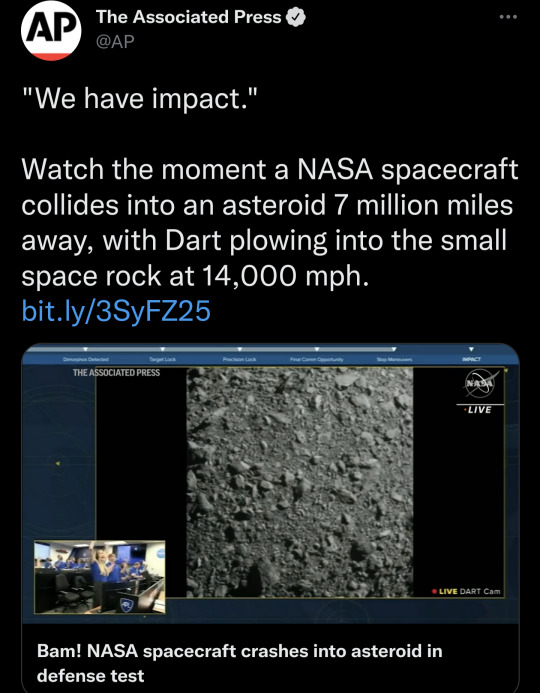
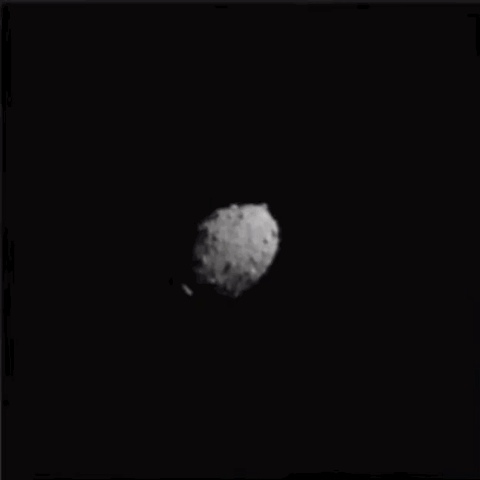
The DART mission (Double Asteroid Redirection Test) just successfully slammed into Dimorphos, which is the moonlet of the asteroid Didymos (also affectionately called Didymoon). Over the next few days astronomers around the world will observe Didymos and Dimorphos to see if there has been a change in orbit from the latter. This is humanity's first real attempt at altering the course of a "killer" asteroid, even if this one isn't hazardous to us.

59K notes
·
View notes
Text
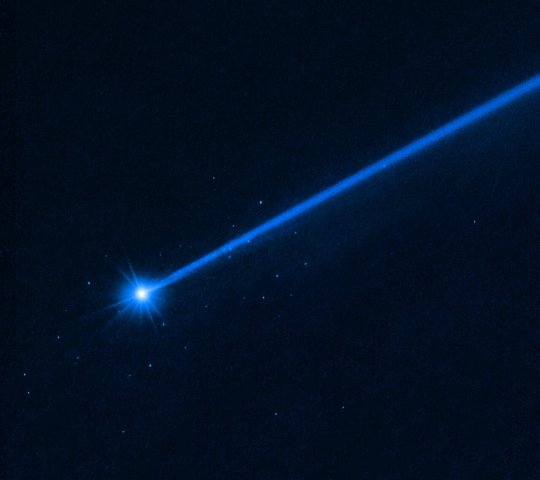
Dimorphos
145 notes
·
View notes
Video
youtube
Crashing a spacecraft into an asteroid, just to see what will happen
244 notes
·
View notes
Text
While most folks were sitting down for supper, NASA tried to move a space mountain.
Beyond sight for backyard stargazers, a spacecraft the size of a vending machine self-destructed by ramming into a harmless asteroid shortly after 7 p.m. ET Monday, September 26th. The high-speed crash was part of the U.S. space agency's Double Asteroid Redirection Test, or DART.
The moment of impact marked the first time in history humans have attempted to alter the path of an asteroid, a flying chunk of rubble left over from the formation of the solar system about 4.6 billion years ago. Most of the time, these ancient rocks pose no danger to Earth, including Dimorphos, the one NASA just used for target practice. But at least three have caused mass extinctions, the most infamous of which wiped out the dinosaurs.
Stegosaurus didn't have NASA.
"We are changing the motion of a natural celestial body in space. Humanity has never done that before," said Tom Statler, program scientist. "This was the substance of fiction books and really corny episodes of Star Trek from when I was a kid, and now it's real."
(continue reading)
191 notes
·
View notes
Text

154 notes
·
View notes
Text
incredibile job to everyone at NASA who worked and contributed to the mission, this was a pure scientific marvel, but I just can't shake the pure primal terror that was watching the asteroid get closer and closer on camera before impact. you just know indie horror game makers are gonna have a field day w this one lol
149 notes
·
View notes
Text
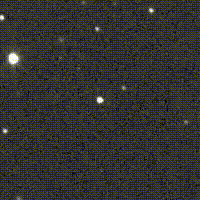
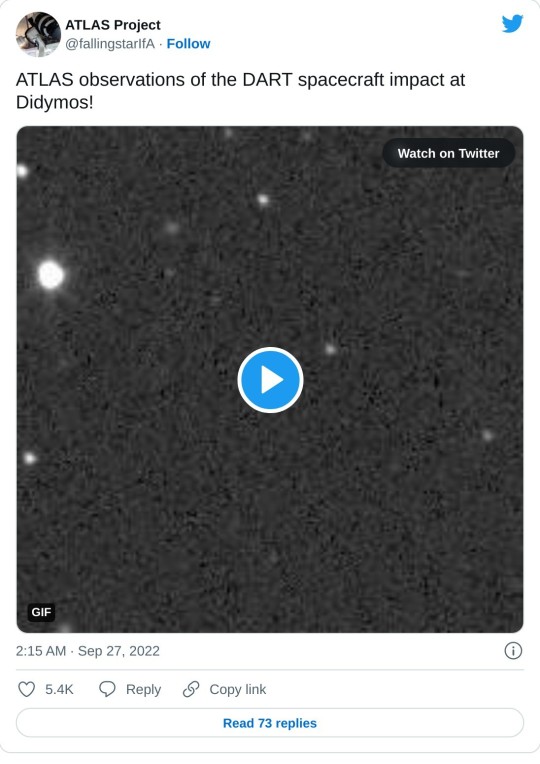

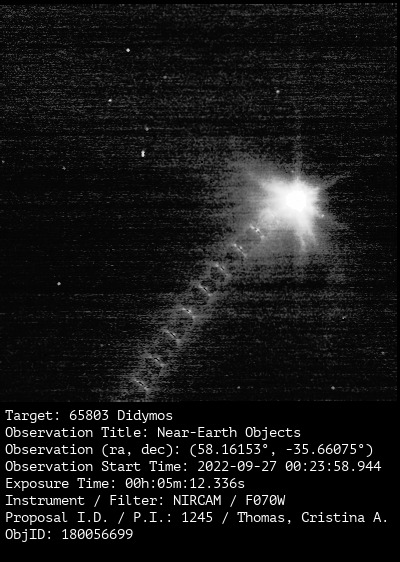
James Webb got got us this one
Alexandra Witze @alexwitze · 5h First @LICIACube images of the #DARTMission impact are out.


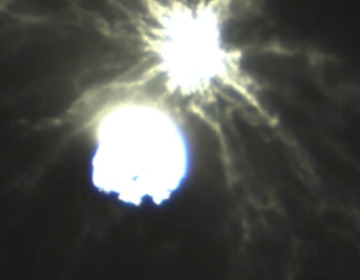
dude, nice
67 notes
·
View notes
Photo
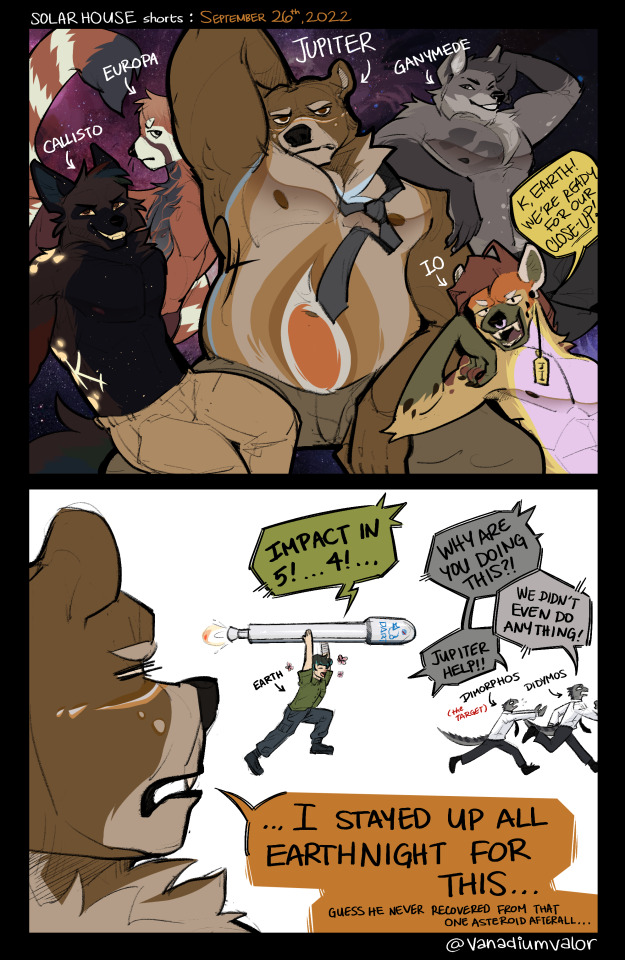
On September 26th, the astronomy community had a wild day. Jupiter made its closest approach to Earth and sat in opposition, meaning that its stripes and moons were visible from Earth with just binoculars!
That same afternoon, NASA successfully carried out the DART (Double Asteroid Redirection Test) mission that launched a missile into Dimorphos, a moon of the asteroid Didymos, seeking to redirect the course of the asteroid.
As a person who personifies the solar system into furries, this evidently was also a big day for me!
So please enjoy my interpretation of the events :3
If you like the planets as furries, they’re part of a project I’m working on called Solar House! I recently refurbished this account so you can see more stuff over at https://twitter.com/VanadiumValor and https://twitter.com/SolarHouseComic !
#astronomy#personification#gijinka#furry#furry art#sfw furry#comic#nasa#dart#dimorphos#didymos#funny#jupiter#io#ganymede#callisto#europa#earth
61 notes
·
View notes
Text
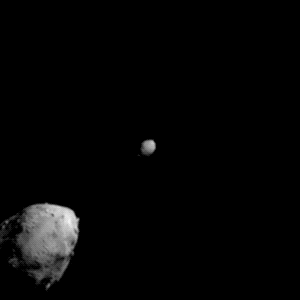
Impact!
Today, the Double Asteroid Redirection Test (DART) spacecraft ended its mission to see if we're able to change a planet-killing asteroid's course by essentially slamming a heavy box with a big engine into it at 4.1 miles (6.6 kilometers) per second.
It will take a few weeks of observation here on Earth to find out if the asteroid's course was indeed altered, but we have at least learned that we are able to successfully target and hit an asteroid from Earth, and that's a pretty big deal!
For more info, see:
#dart#double asteroid redirection test#nasa#space#science#asteroid#dimorphos#didymos#astrophysics#impact
73 notes
·
View notes
Text
hey everyone: go watch nasas DART mission slam into an asteroid to try and redirect it!
they’re live right now, and are giving a bunch of background information on the mission
73 notes
·
View notes
Photo
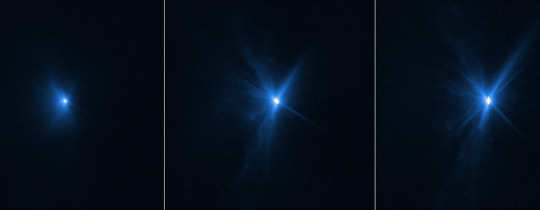
HUBBLE VIEWS OF DIMORPHOS EJECTA These images from NASA’s Hubble Space Telescope, taken 22 minutes, 5 hours, and 8.2 hours after NASA’s Double Asteroid Redirection Test (DART) intentionally impacted Dimorphos, show expanding plumes of ejecta from the asteroid’s body. This event was the world’s first test of the kinetic impact technique using a spacecraft to deflect an asteroid by modifying its orbit. The Hubble images show ejecta from the impact that appear as rays stretching out from the body of the asteroid. The bolder, fanned-out spike of ejecta to the left of the asteroid is in the general direction from which DART approached. In the Hubble images, astronomers estimate that the brightness of the Didymos system increased by 3 times after impact. They’re also particularly intrigued by how that brightness then held steady, even eight hours after impact. These observations, when combined with data from NASA’s James Webb Space Telescope, will allow scientists to gain knowledge about the nature of the surface of Dimorphos, how much material was ejected by the collision, how fast it was ejected, and the distribution of particle sizes in the expanding dust cloud. Hubble will observe the Didymos-Dimorphos system ten more times over the next three weeks to monitor how the ejecta cloud expands and fades over time. Hubble observations were conducted in one filter, WFC3/UVIS F350LP, and assigned the color blue. CREDITS: SCIENCE: NASA, ESA, Jian-Yang Li (PSI) IMAGE PROCESSING: Alyssa Pagan (STScI)
31 notes
·
View notes
Photo
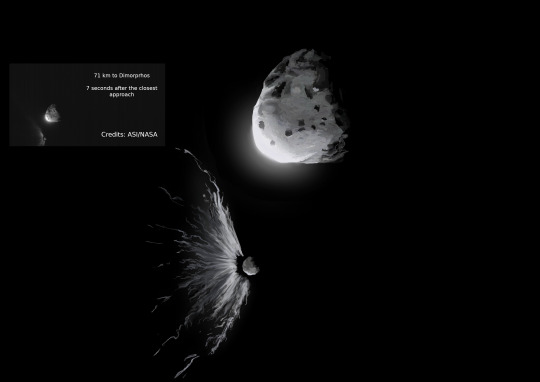
Dimorphos and Didymos
Reference image: https://www.nasa.gov/feature/nasa-dart-imagery-shows-changed-orbit-of-target-asteroid
#art#fishcatart#dimorphos#didymos#dart#liciacube#girl help#i spent so long on this#o(-<#anyways i'm vibing
21 notes
·
View notes
Text
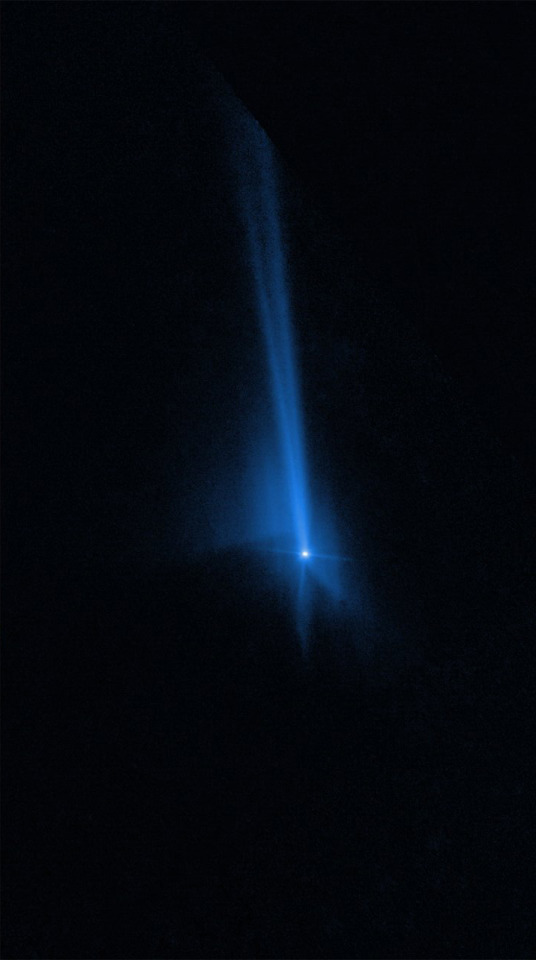
Split-Tailed Dimorphos
204 notes
·
View notes
Text



Dünya'dan 11 milyon kilometre uzaklıktaki Dimorphos asteroidine Dart Uzay Aracı NASA tarafından yönlendirilerek çarptı! Dünya'nın Ay'a olan uzaklığından 28 kat uzak! Ve çarpma anı an be an canlı olarak yayınlandı. Bu mükemmel bir şey...
20 notes
·
View notes
Text
the kinetic energy of a 610 kg spacecraft traveling at ~6600 m/s is (by my math) ~1300 MJ, and the gravitational binding energy of a 5x10^9 kg asteroid that’s ~170 meters in diameter is (again, by my math) ~12 MJ, so why wouldn’t DART just blow Dimorphos apart, or at least knock a big chunk out of it? Most of the coverage I’ve seen indicates that they expect Dimorphos to be deformed by the impact, but not, like, totally destroyed.
13 notes
·
View notes
Text
dimorphos more like dimongus

38 notes
·
View notes